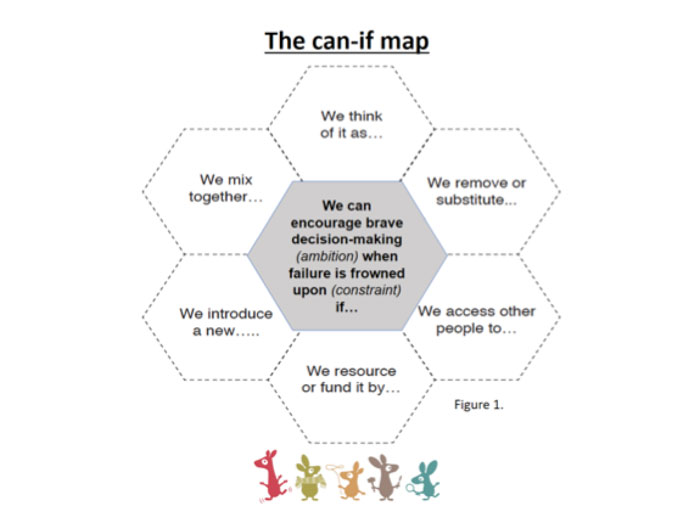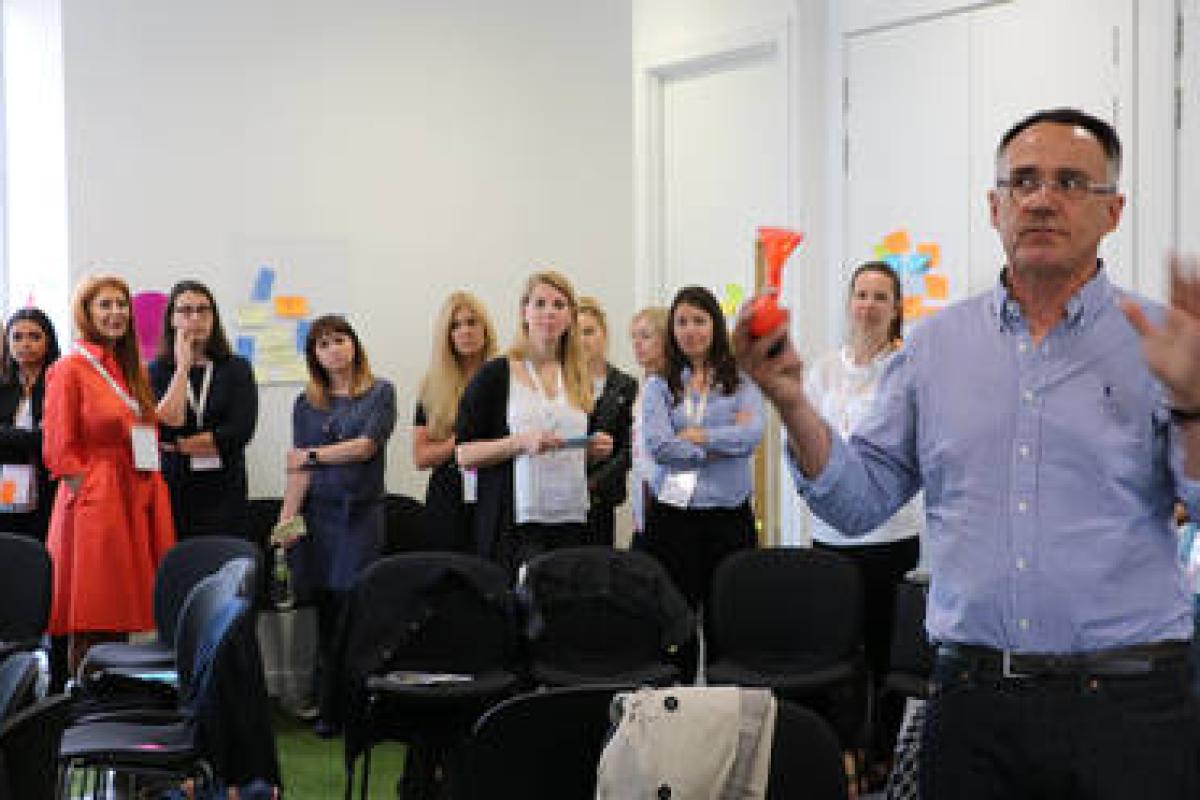They had only met one another for a day in the previous month (constraint of unfamiliarity). They were asked to learn and apply two discrete yet complementary business frameworks – A Beautiful Constraint and Creative Creatures (constraint of expertise). Some people would label themselves as creative, but a large number would not (constraint of creative confidence). They only had 4 hours to do this (constraint of time) and were confined to one room (constraint of space). Finally, they had been asked to develop creative solutions to three business challenges, all underpinned by significant…yes, you guessed it……constraints.
The morning
The participants undertook a creative exercise to help them better understand the 5 different archetypes and to identify which one or two they felt most comfortable with. By the end of the session, each participant was more aware of the role they could play at the creative table and each person was more understanding of one another’s strengths in creativity. We had embraced the constraints of unfamiliarity and creative confidence.
Creative Creatures unlocks the creative potential in individuals, teams and processes so that companies can develop better solutions more efficiently. The approach, underpinned by a psychometric questionnaire, consists of 5 discrete archetypes:
The Stimulator is a creature of diversity, who loves exploring new angles and avenues. Without them, the flowerbed of ideas would be barren.
The Spotter absorbs all the stimulus created by the Stimulator and is able to unearth the little gems, spot the valuable nuggets that are often the beginnings of a BIG IDEA.
The Sculptor then takes the idea, turns it in to something fully formed, more concrete and tangible. They bring the BIG IDEA to life by using words or images or both.
Finally, it is the turn of the Selector to separate the good ideas from the not so good ideas. They use both information and intuition to consider the commercial and practical implications of all the options.
The Supporter is the glue that sticks the team together, the oil that makes the wheels turn. They understand who is good at what and which creative behaviour is required when in the process.
The afternoon
Working in small balanced teams, participants used the creative behaviours of the Stimulator, Spotter,Sculptor, Selector and Supporter to lubricate a process – A Beautiful Constraint – that would help the group develop breakthrough solutions to three key business issues:
- How could companies be encouraged to share ideas and learnings more effectively between employees?
- How could companies adopt more of a future-thinking mindset?
- What could companies do to encourage a culture that embraced failure?
A Beautiful Constraint is based on a set of principles outlined in a book by the same name, co-authored by Adam Morgan and Mark Barden of eatbigfish. Underpinned by research carried out across a 3 year period, the underlying premise of the approach is that by embracing constraints, they can be turned into sources of possibility and advantage.
We focused on two of the core frameworks – Propelling Questions and Can-if Thinking
First of all, each group was given one challenge to focus on which they translated into a Propelling Question. This juxtapposes a strong ambition with a significant constraint and forces you to embrace the latter in order to achieve the former. The following example demonstrates the migration from a business challenge into a Propelling Question:
Business Challenge: What can companies do to encourage a culture that both embraces and learns from failure?

Propelling Question: How can we encourage brave decision-making (ambition) when failure is frowned upon in the company (constraint)?”
Once each group had developed their Propelling Questions, they then turned to can-if thinking to develop some powerful solutions. Can-if thinking forces everyone involved in the conversation to take responsibility for finding answers, rather than identifying barriers. It keeps the oxygen of optimism continually alive throughout the process. There is also a method that helps apply the mindset:
The can-If map opens up six different angles of attack, increasing the chances of finding powerful solutions that address the Propelling Question (in the middle).

2 hours packed full of high octane creative thinking, using can-if thinking, produced 15 concepts addressing 3 business challenges relevant to 50+ marketers.
Imagine what we might have done without any of the constraints?
Not half as much. This is why:
The constraint of unfamiliarity provided both a freshness and richness of thinking. Less baggage meant more freedom to explore.
The constraint of creative confidence forced people to dissect the process of creativity and by doing so, they realised that it was not a question of IF they were creative but HOW.
The constraint of expertise increased the appetite for learning with a group eager to know more and live up to their OnesToWatch label. The two approaches were easily digestible, complementing rather than conflicting with one another.
The constraint of time forced us to ensure that the content was fit for the 4 hours available and made us think carefully about session design, group sizes, exercise management etc. to make the most of the time we had.
The constraint of space encouraged us to use every inch of floor space to create a colourful theatre of noise and energy.
The constraints that underpinned each of the three business challenges acted as powerful springboards for developing ambitious solutions.
The immediate verbal and written feedback from the OnesToWatch cohort strongly indicated that constraints are indeed beautiful things. The session scored 4.8 out of 5, one of the strongest across the entire OnesToWatch programme.
A final word from Gemma Greaves, Chief Executive, The Marketing Society:
“One of our key thrusts in 2017 is around ‘Bravery’. We are urging our wonderful members to make a difference by taking courageous decisions. In a world where we are all confronted by significant constraints each and every day, real courage is required to embrace them and use them as the foundation for achieving great things!”
The session was facilitated by David Hicks, Tony Franco and Mark Simmonds.
Creative Creatures is a part of The Marketing Society’s Being Bold corporate membership offering in professional development.
This article originally appeared on www.wearecreativecreatures.com
